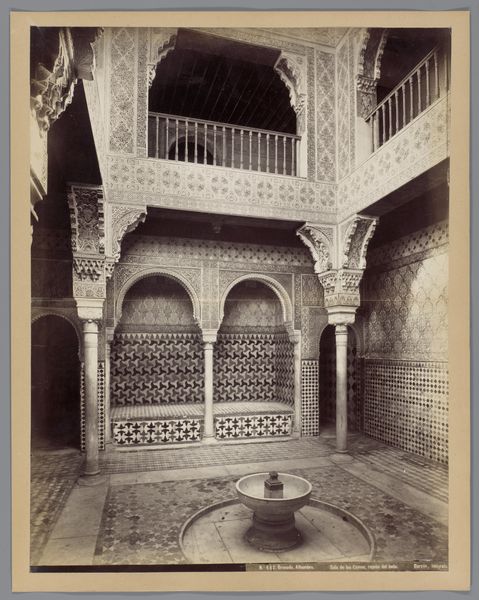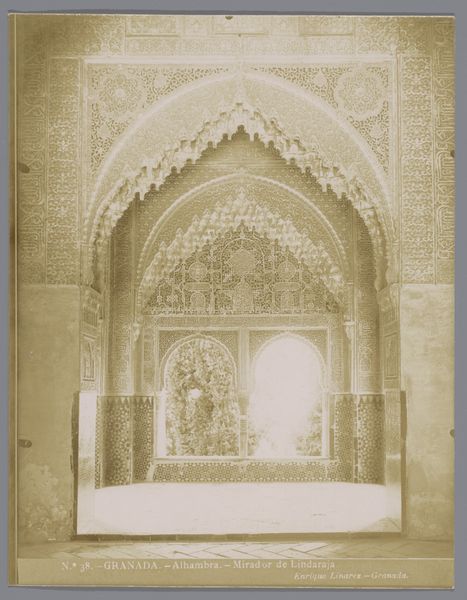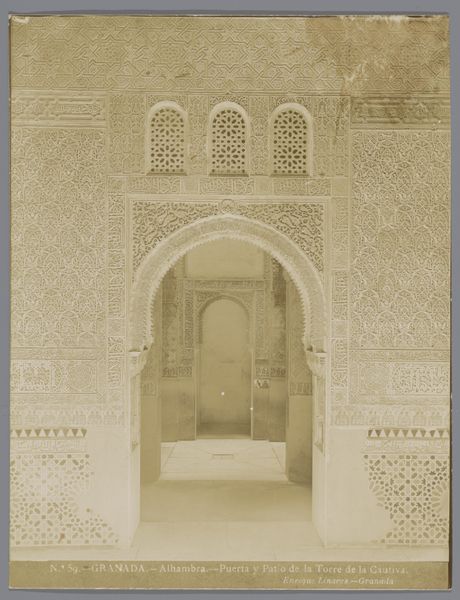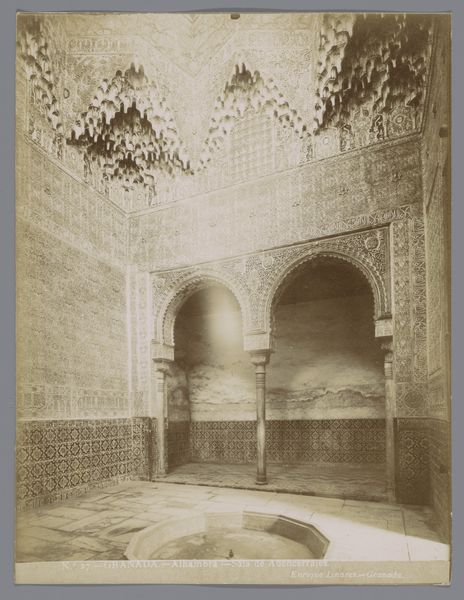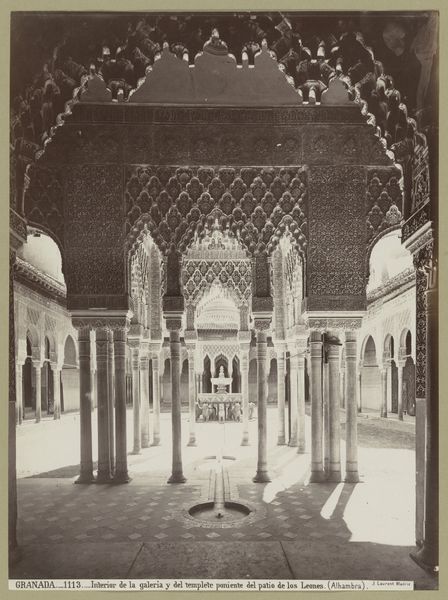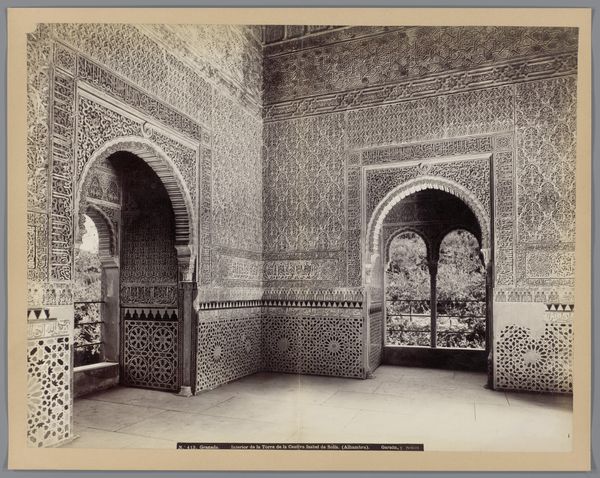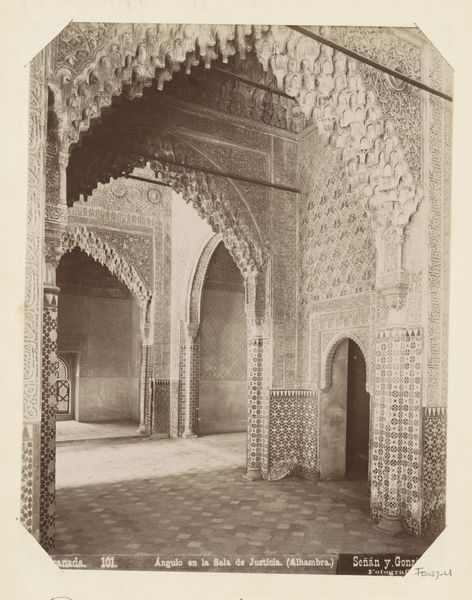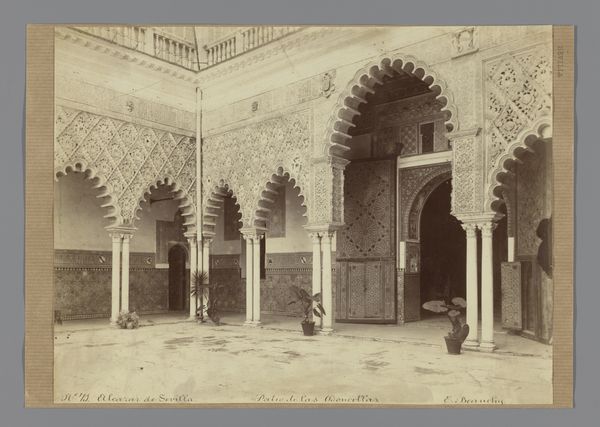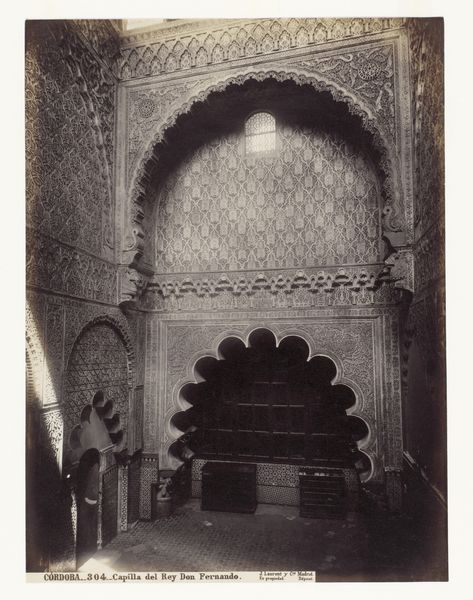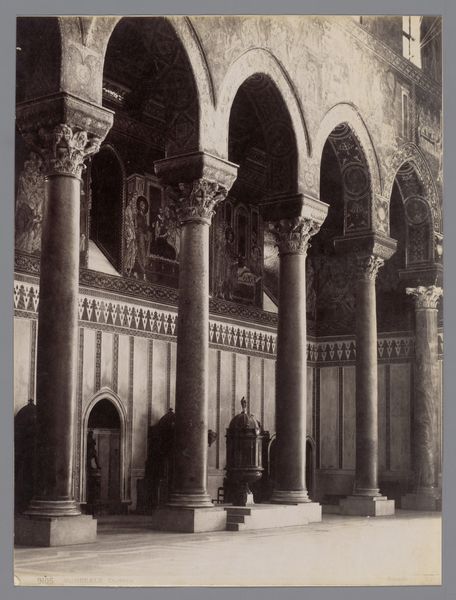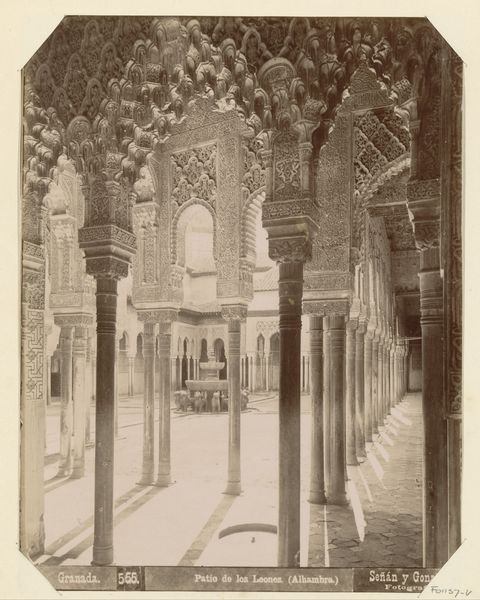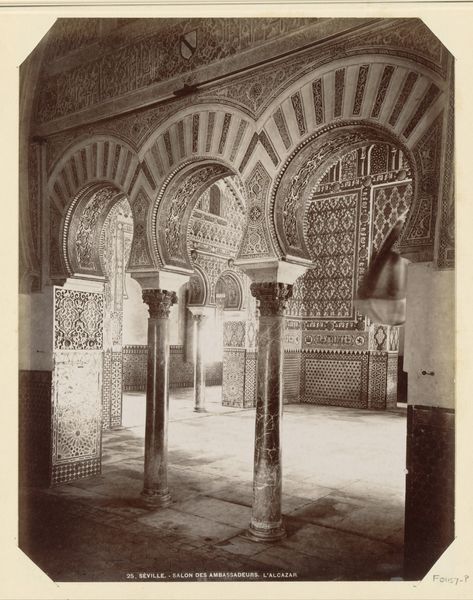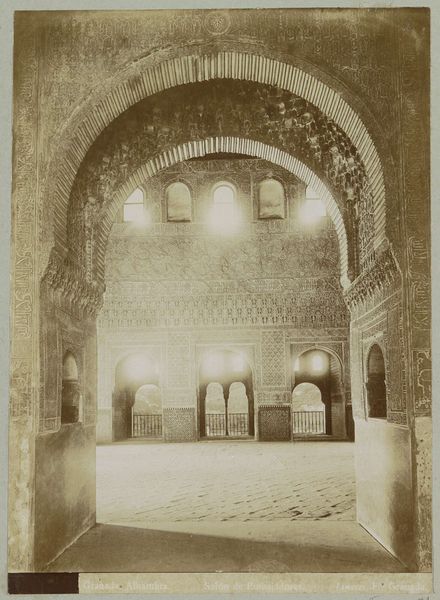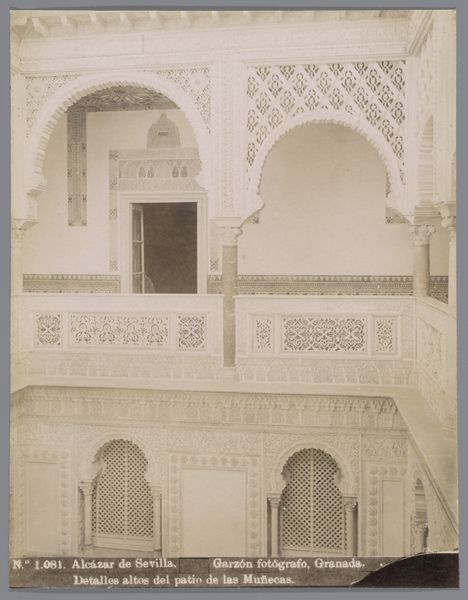
photography, architecture
#
historic architecture
#
photography
#
islamic-art
#
architecture
#
monochrome
Dimensions: height 548 mm, width 414 mm
Copyright: Rijks Museum: Open Domain
Editor: This is a photograph by Rafael Garzón, taken sometime between 1870 and 1895. It's called "Interior of a hall of the Alhambra in Granada." The monochrome palette and intricate detailing create a deeply layered effect, almost dizzying. What strikes you most about the imagery presented? Curator: The overwhelming sensation is precisely the point, I think. This hall, meticulously captured, reveals a commitment to visual language steeped in symbolic meaning. Note how the calligraphy isn't just decoration. It evokes presence through repetition, creating a link across generations. Each geometric form, each arabesque—they're visual prayers, memories etched in stone. Does the photograph capture for you, or dilute, that presence? Editor: That's interesting. I hadn’t considered them visual prayers. I do find it peaceful. But perhaps the photo aestheticizes and domesticates something that was originally radical in its time. It transforms the space into something for viewing rather than inhabiting. Curator: Precisely. Think about photography as a medium here. How does it freeze this moment? The image is no longer living as a site of pilgrimage and prayer; it has now become a relic, of sorts. A relic imbued with complex symbolism. What continuities might we see with other faith traditions where representation and place become important, for you? Editor: The visual language certainly reminds me of Byzantine art, with its use of symbolic representation. It seems like even in this photographic format, the image preserves and presents a narrative beyond its immediate visual qualities. Thank you for revealing such a comprehensive depth of information here! Curator: My pleasure. Examining visual symbols unearths echoes and cultural memory through layers of human creation.
Comments
No comments
Be the first to comment and join the conversation on the ultimate creative platform.
